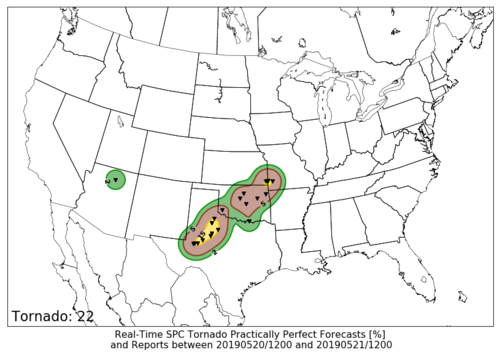I saw at least one person tweet an OUN obs sounding today claiming [sic] "I have never seen such a tornado-supportive sounding".
Meh.
Certainly some impressive parameters, but consider a few things:
1) next to no shear between 2 and 4 km (actually, 0-4 km SRH < 0-3 km SRH due to slight backing between 3 and 4 km); if everything else went right, this would probably not be enough to restrict sig tors from forming, but...
2) likely subsidence inversion just above 700 mb; not only a CAPE robber (hurting vertical accelerations), but also suggestive of downward moving air in that layer, further restricting explosive development;
and perhaps most intriguing and subtle...
3) Very deep nearly-saturated inflow layer. I was involved in a lengthy Twitter discussion with another PhD meteorologist and severe weather expert:
...discussing the potential impacts of a deep layer with approximately d(theta-e)/dz = 0. It seems quite plausible that the effect of this feature was to allow for inflow parcels to originate at just about any level between sfc and the bottom of the inversion. Well, if parcels enter higher up then, 1) they aren't surface based anymore, and 2) those parcels pass through a much different shear profile on their way up with much less propensity to generate vorticity from tilting. Both of these factors, but especially #2, can complicate storm structure and behavior.
Again, details matter. You cannot claim "massive tornado outbreak" from just synoptic scale pattern + mesoscale situation (i.e., CAPE, shear, composite parameters maxing out).







